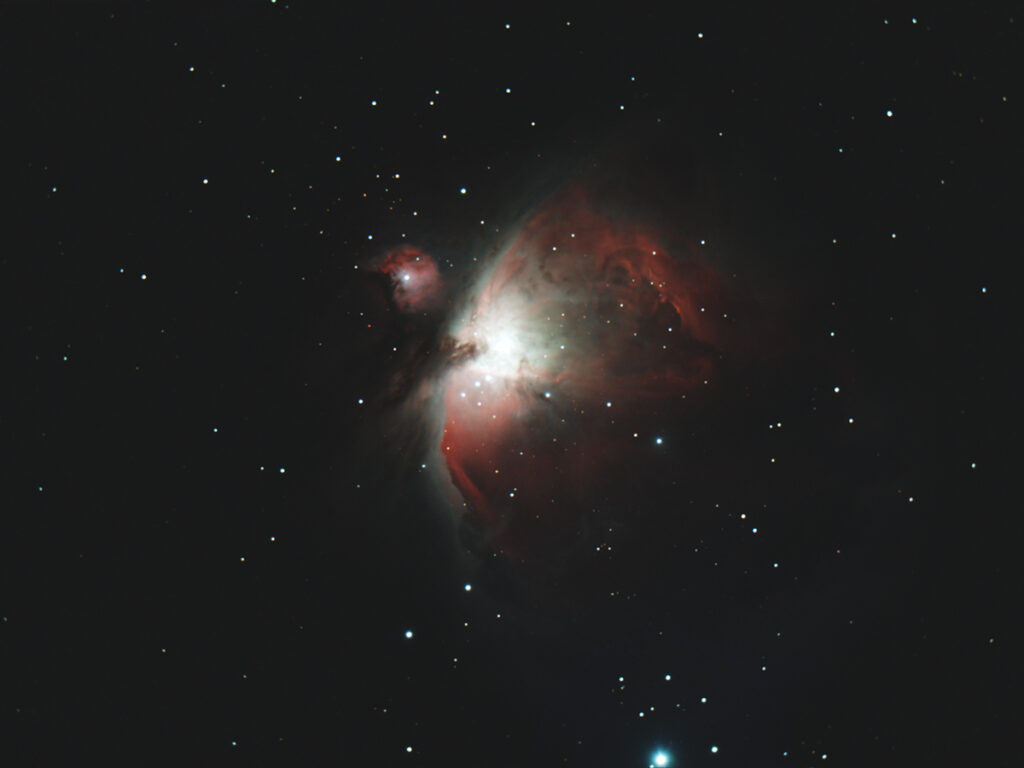
Telescope: 8” Meade Wide Field LX200GPS @ f/4, Altaz mode
Camera: ZWO ASI 294MC (uncooled)
Filter: Orion Imaging Skyglow Filter
Guide scope: None
Exposure: 32x15sec, Gain 120, binned 2×2, saved as TIFF
Darks: None
Flats: Synthetic
Average Light Pollution: Red zone, Bortle 8, poor transparency
Lensed Sky Quality Meter: 18.4
White Balance: Nebulosity Automatic
Software: ASI Air Plus, Deepsky Stacker, Nebulosity, Photoshop
This field shows M42/43, the Great Nebula in Orion. This is a wonderful region to explore with binoculars or a small telescope. Visually the nebula shows a soft gray and displays a wealth of fine detail. This is also a very rewarding region to photograph and even short exposures show a range of beautiful colors. The red of the Great Nebula is the emission of hydrogen set aglow by hot young stars within the nebula while the smoky blue/gray is starlight reflecting off of interstellar dust. The dark lanes are veils of dust in the foreground.
This is the first of 14 images taken with my ASI Air Plus while using it along with my wide field 8” LX200GPS for remote, camera-assisted observing. The scope was fitted with a Celestron 0.63x focal reducer/field flattener, giving a focal ratio of f/4. The camera was an uncooled ASI 294MC fitted with a 2” nosepiece giving the 105mm backspacing from the focal reducer and holding an Orion Imaging Skyglow Filter that was serving as an IR cut filter. This system was configured primarily for wireless remote observing using Sky Safari via SkyFi to control the telescope and the preview mode of the ASI Air Plus to observe through the scope. The Live Stacking mode was also very effective, but for my purposes the Preview mode worked well. To make a record of interesting objects I used the ASI Air Plus to grab 32x15sec subs for later processing.
The Sword of Orion is currently well-placed rising in the east as the sky darkens.
Recent Comments